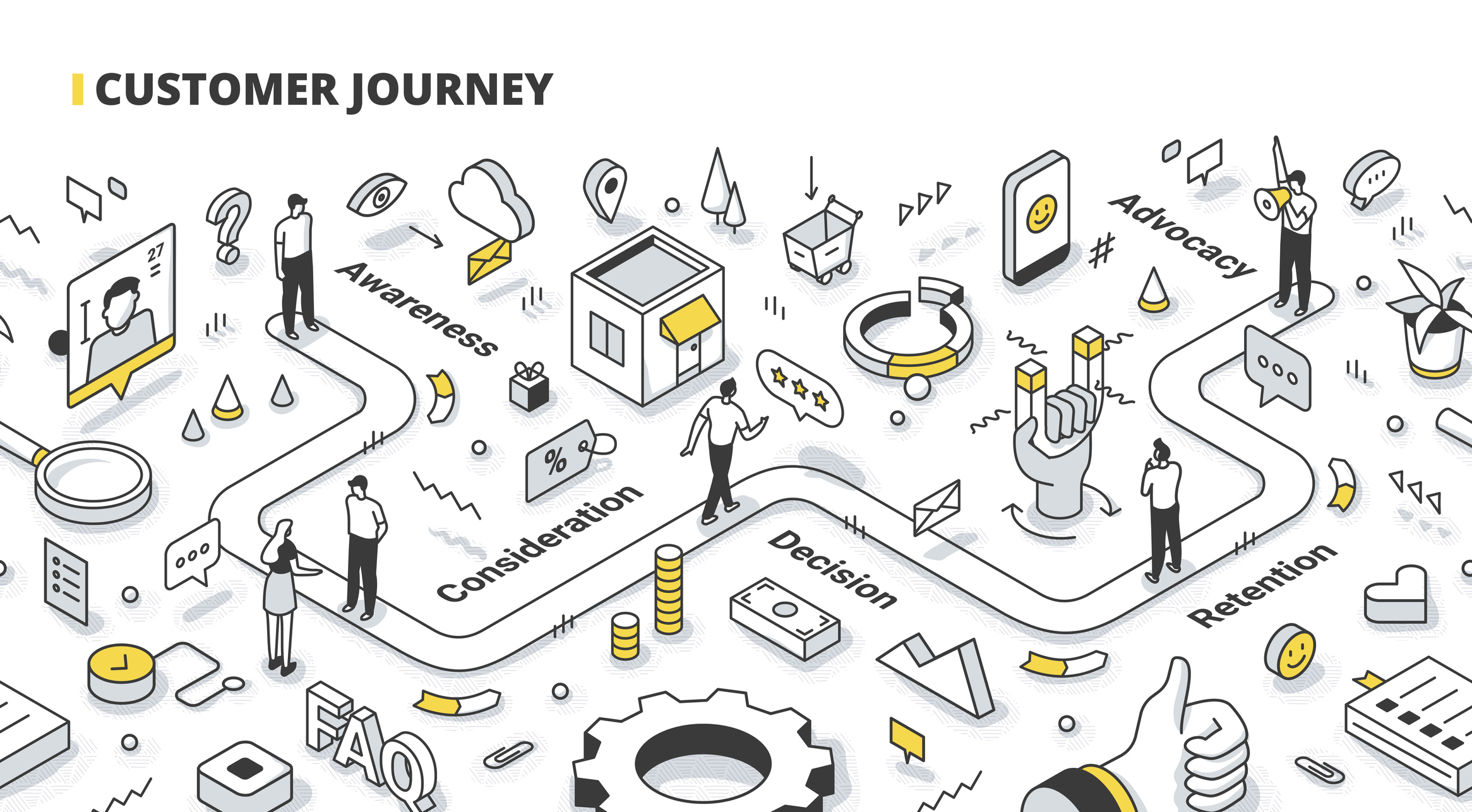Mapping the Customer Journey: From Awareness to Advocacy
At face value, the customer journey may seem simple. A customer finds out about your products and services, decides it is good for them, and then buys it.
Unfortunately, for most businesses, the customer journey is never that simple. Understanding every step your customer goes through, along with any obstacles they encounter, can help streamline the journey and bring your customers from awareness to advocacy.
The customer journey is an important part of the customer experience. Recent research has shown that about 80% of consumers and business buyers say the customer experience is just as important as a business’s products and services.
We are going to show you why customer journey mapping is crucial to your success and how doing this can help improve the overall customer experience.
Key Takeaways
- Mapping the customer journey for your business gives you a visualization of customer touchpoints through each stage.
- Use data-driven customer personas to understand what a customer might experience at each touchpoint.
- Creating a customer map can reveal roadblocks and pain points within the customer journey.
What Is Customer Journey Mapping?
Customer journey mapping is the process of creating a visual representation of how customers interact with your business. It details each touchpoint and walks through the customer journey from their perspective. Customer journey mapping can reveal pain points along with ways to relieve that pain and improve the customer experience.
Depending on the type of business you run, you may need to map out multiple customer journeys based on demographic information and other factors.
Here is an example of a customer journey for a retail business.
Why Is Journey Mapping Important?
At first glance, you might think your current customer journey and overall experience are fine. Your customers are generally satisfied, and your sales are consistent. However, when you get a detailed look at how customers experience and interact with your brand, you will likely find some areas that need improvement.
Even solving minor problems can have a major impact on your success. Customer journey mapping is important because it:
- Gives your brand a new perspective
- Creates a new customer base
- Opens opportunities for proactive customer service
- Improves customer retention rates
- Helps your business become consumer centric
Once completed, you can use your customer journey map to train your teams on how to improve the customer experience and create loyal customers who turn into brand advocates.
To help you get started, this video explores the eight stages of a traditional customer journey, including:
- Awareness
- Engagement
- Subscription
- Conversion
- Excitement
- Ascension
- Advocacy
- Promotion
How to Create a Customer Journey Map
Now you understand what a journey map is and why it is important. The next step is creating your own customer journey maps. These visual representations can help you and your company stay focused on your customer experience goals.
1. Create Customer Personas
A customer persona is a description of various types of customers who pursue your business. Instead of focusing on generic ideal customers, you should talk to real customers, including customers you still have and those you may have lost.
To collect as much customer data as you can, try some of the following methods:
- Send customers an email survey
- Interview past and present customers
- Ask employees with frequent customer interactions what customers say about their experiences
- Listen to call center conversations
- Monitor social media discussions and mentions
With all the data you gather, you can create multiple customer personas based on real information from real customers.
2. Choose Your Goals
When a customer interacts with your brand, what do you hope will happen? You need to identify a goal for each customer persona at each stage in the customer journey. Discuss what these goals should be with employees who interact with customers at each touchpoint.
3. Understand Customer Touchpoints
Every time a customer interacts with or experiences your business, that is a touchpoint. Your customer touchpoints will depend on what type of business you have. For example, a retail business will have a dramatically different set of touchpoints than a B2B business without a storefront. Put yourself in your customer’s place and imagine where and how they are interacting with your brand.
This list showcases some of the many touchpoints that may exist within a business.
Once you have compiled your touchpoints, you can then start placing them along your customer journey.
4. Map the Current Journey
At this stage, you want to map out what you believe the current customer journey looks like. Place a priority on getting the information right instead of making it look sophisticated.
For each stage of the customer journey, include relevant touchpoints and channels. You should also list who “owns” each stage, for example, marketing or sales. Add colors and graphics to enhance your customer map and make it easy to understand with just a glance.
Once the current customer journey is mapped, this can illuminate potential roadblocks. You might realize customers end up spending too long in a certain phase and then abandon your brand. If their experience was bad enough, that customer might share their negative experience with others, further affecting your brand.
5. Map Your Ideal Journey
Once you know what your current customer journey looks like, you can start making changes to what you want it to look like. Start mapping out a new journey with your new solutions and actions. Talk with stakeholders responsible for each stage to understand what they want the customer journey to be.
Your goal should be to create customers who are dedicated to your brand and share their positive experiences with others, thereby becoming brand advocates.
Televerde Can Enhance Your Customer Journey with Customer Service Solutions
As you map out your customer journey, you may realize your business needs more support to achieve your customer experience goals. Televerde is here to help. We have a modern view of the customer lifecycle and offer various solutions for marketing, sales, and the customer experience.
We have over 25 years of experience helping businesses like yours achieve high customer lifetime value (CLV). We do this by changing the sales funnel into an infinity loop that helps keep your customers engaged with your brand.
Want to see how our solutions will work for you? Check out our solutions page to see what we can do for your business or contact Televerde today to get started.


